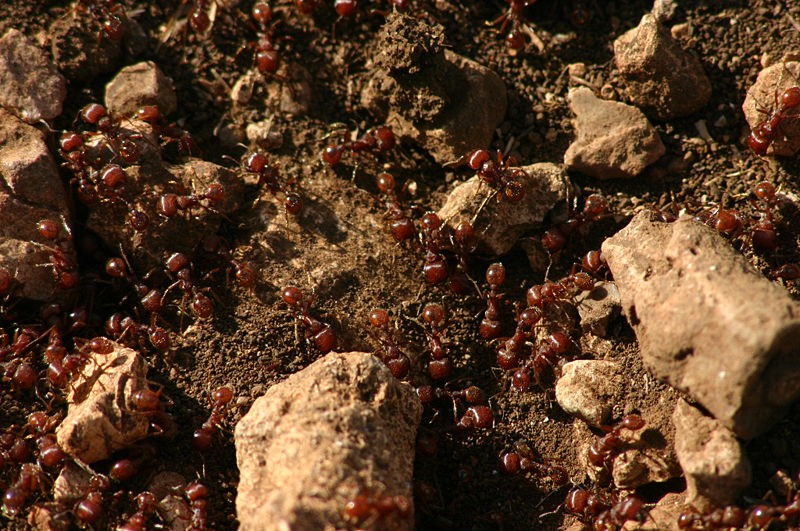Fire ants or red ants have invaded houses, roads, trees, and other sites in the village of Brahmansahi, located in Odisha state.
As a result, the Indian village declared war on the ants as a number of people have been stung already as well.
However, there were no direct reports of any human casualties.
Local sources indicated that the ant invasion started due to floodwaters caused by torrential rain.
Villagers claimed that the ant raid has left them unable to eat, sleep, and even sit properly without being a victim of the painful stings, according to local media reporting.
The ant stings have led to reported skin swelling and irritation, affecting domestic animals as well.
Medical teams are expected to arrive in the village from the time of reporting of the ongoing incident earlier this week.
Fire ants (Solenopsis invicta), officially known as the red imported fire ant (RIFA), are invasive species native to South America such as Argentina, Brazil, Paraguay, and Uruguay.
In the United States, S. invicta are considered a major economic pest in the southeastern states.
Experts claimed that the RIFA was accidentally introduced in several Asian and Caribbean countries, as well as Australia and New Zealand.
Village Ant Invasion

Villagers, along with local authorities, declared the war on Tuesday, September 6, by launching a so-called operation against the fire ants by destroying their habitats after infesting the village in Chandradeipur panchayat in Puri district when floodwaters receded.
Entomologists reportedly clarified there is nothing to fear since the ant infestation can be resolved by applying insecticides, as cited by Times of India.
According to Sanjay Kumar Mohanty, an entomologist and scientist with the Odisha University of Agriculture and Technology, the ants got their habitats or colonies destroyed following the floods due to heavy rain, which forced the animals to come out from their holes and transfer into a different location to settle as their new home, as cited by the Indian media outlet.
Mohanty added that the ant infestation "will be checked soon" when they establish their new homes for approximately one to two days.
In addition, the entomologist provided killing them is also an option, emphasizing that eliminating the population is not simple unless the queen ant and larvae are destroyed.
Fire Ant Habitats
The National Pest Management Association (NPMA) said fire ants typically built their nest in soil near structural foundations or inside landscaping but explains most of these ants are commonly found in outdoor areas.
They can also gain access establishments like buildings by entering through AC units and HVAC systems.
The NPMA stated that while red ants are commonly perceived as biting, they are actually using their stings to inflict damage.
Although not lethal, the so-called "ant bites" can cause severe health complications for persons allergic to insect stings.
The Centers for Disease Control and Prevention (CDC) recommended avoid disturbing or standing near ant mounds to avoid any red ant stings, which also causes a burning sensation.
© 2026 NatureWorldNews.com All rights reserved. Do not reproduce without permission.





